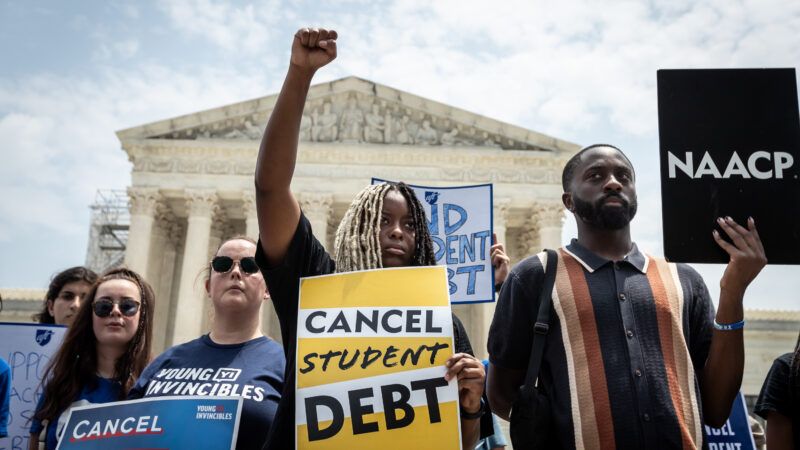The Federal Student Loan Pause Is Finally Ending
Since its start in March 2020, the pause has cost taxpayers around $200 billion.

Interest began accruing on federal student loans this month, with payments set to begin in October—roughly three and a half years since they were initially paused by the Trump administration in March 2020. While the pause was hailed as a necessary measure to help supposedly struggling student loan borrowers during the pandemic, not only did the pause extend far longer than its original justification would entail—it left both taxpayers and student loan borrowers worse off.
The repayment pause on federal student loans was first introduced just days into the onset of the COVID-19 pandemic in the United States. Over the next several years, the pause was extended eight separate times. While Education Department officials attempted to justify the extensions with legal arguments for the first two extensions, the department offered no legal justification at all for the final six. Twice, officials renewed supposedly "final" extensions to the pause.
However, June's debt ceiling deal mandated that the pause finally come to an end. As part of that plan, interest began occurring on federal student loans at the beginning of the month, with the first payment deadline coming in October.
Over the past three years, pausing repayment on federal student loans was a disastrous policy. In total, the pause will have cost taxpayers an estimated $200 billion in lost revenue. And for all this money, there isn't much to show for it. According to a June paper from the National Bureau of Economic Research, borrowers now have more debt than they started with before the pause began, not less.
Adding to the high economic cost of the pause, another expensive program is about to dominate the federal student loan system.
More than 4 million borrowers have now enrolled in the SAVE plan, a modified version of the most popular income-driven repayment (IDR) plan for student loan borrowers that was introduced along with Biden's now-defeated forgiveness proposal. Under the old system, borrowers could enroll in a program that would fix their monthly loan payments to 10 percent of their discretionary income (calculated at income over 150 percent of the federal poverty level) with loans typically forgiven after 20 or 25 years.
But under the new plan, borrowers pay far less. Monthly payments are fixed at just 5 percent of discretionary income (which is now calculated as earning above 225 percent of the poverty rate), with repayment occurring in 10 years if the borrower's balance is less than $12,000. And unlike in the previous plan, incomplete or late payments will still count towards the borrower's 10 years of required payments. The plan alone has been estimated to cost taxpayers $475 billion over the next decade.
The plan is so generous, and allows borrowers to pay back such a small amount of their loans before forgiveness in many cases, that some critics have described it as essentially turning student loans into de facto grants—a move that will incentivize students to take out more student loans, not fewer.
"The changes mean that most undergraduate borrowers will expect to only repay a fraction of the amount they borrow, turning student loans partially into grants," wrote Adam Looney, a senior fellow at the Brookings Institution, last year. "It's a plan to reduce the cost of college, not by reducing tuition paid, but by offering students loans and then allowing them not to pay them back."
While restarting federal student loan payments is an important step forward, the damages wrought by the pause—and other Biden administration student loan policies—will continue to do damage to taxpayers and do little to actually address the factors that lead individuals to take on too much student loan debt.
Show Comments (71)